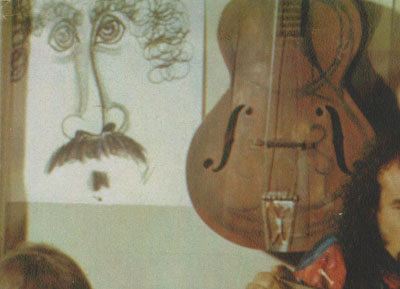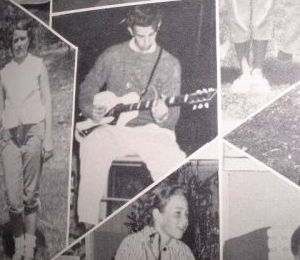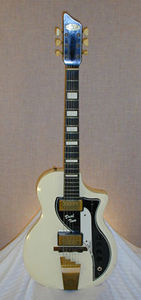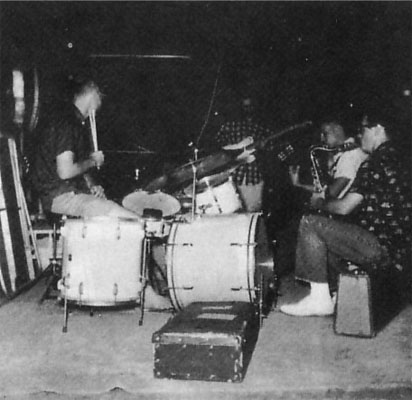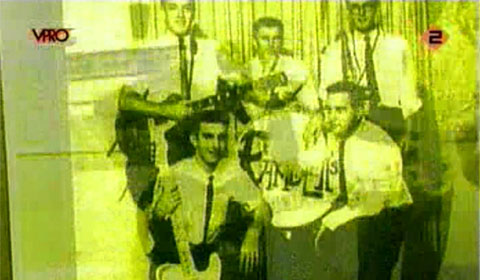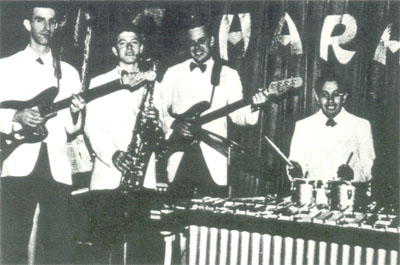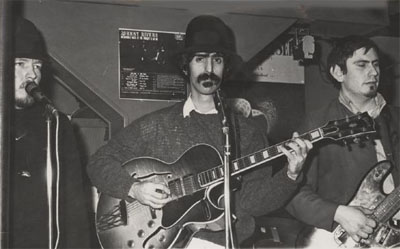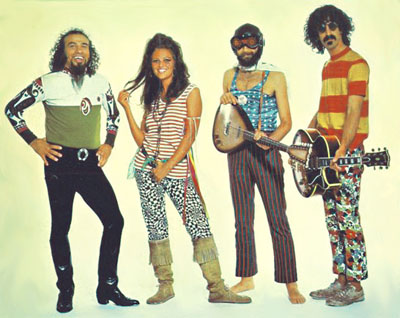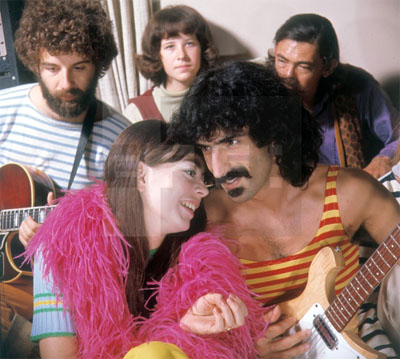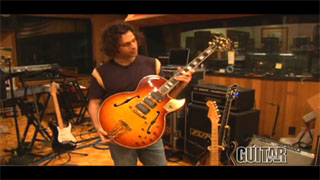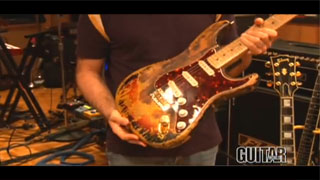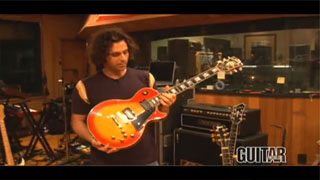At the [London, February, 1977] gig I saw Frank was playing an SG-shaped instrument—was it an SG?
"It's not really an SG, it's a homemade guitar. I bought it from a kid in Arizona, he brought it around after a show, about four or five years ago."
There was an SG pictured on the cover of his live "Roxy and Elsewhere" album, was it the same guitar?
"No. That is an SG, but a different one. Both of them have shaved necks, but the Roxy cover one is my favourite, but there are some problems with that; the neck's been shaved so much that it's hard to keep it in tune, it flaps around like a piece of cardboard. This SG that I was playing here has one extra fret, going up higher than a normal SG, so it means that all the rest of the fret scaling is a little bit tighter. But it's got an ebony fingerboard, which I find nicer. I bought the other SG (the Roxy cover one) second-hand, and it 's really good. The frets were all beat up on it, it was broken in just right.
"Both the guitars I'm using now have 12-volt bi-polar pre-amps, and plus or minus 20dB volume and tone controls as well as different ranges for the EQ's—like the treble control's got a switch selector which gives you one of two ranges, the bass has a similar range selector, and there's a pick-up splitter switch that'll change it from humbucking to a single-coil, along with a phasing switch on it that gives you some really whistling harmonics."
As well as the SG's, Frank has a stack of other guitars, including three Strats.
"Each one of the Strats is wired differently," explained Frank, "one of them, for example, has a Barcus Berry at the end of the neck, which means that if I hammer notes on the neck, it's picked up as part of the picking sound. It also has a special pick-up that was made by Rex Bogue—he was the guy that made that double-necked monstrosity for McLaughlin—he does most of the work on my guitars. I also have Martin, Guild and Gibson acoustics, I've got a bouzouki and a sitar, and two Acoustic Black Widows, made by the Acoustic Control Corporation, one of which has a special pick-up shaped like loops for the strings to go under, similar to what they use on the Condor. I've also got a Hofner bass, a Rickenbacker 12-string and a Fender 12-string, both of which are a little tweezed, and I have a Gibson Switchmaster."
